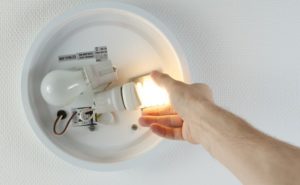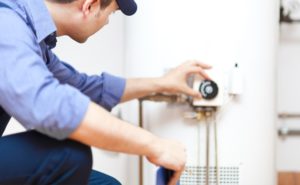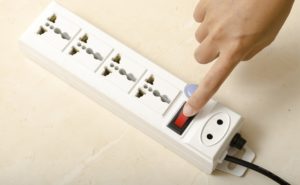As the heat of summer transitions into the cool of autumn, it’s time to start thinking about the energy efficiency of your apartment. Not only is it your civic duty to reduce your energy consumption, but it can also have a very real impact on your monthly expenses. Let’s take a look at some of the best tips and tricks for making your apartment more eco-friendly and efficient during the fall and winter.
Why Cutting Energy Usage Matters
Have you ever stopped and thought to yourself, why does reducing energy consumption matter? While you always hear people talk about energy efficiency, carbon footprints, and living green, why is it relevant to you? Well, there are three primary reasons:
- Cheaper utility costs. The obvious and most direct benefit to you – as a renter – is the fact that you can lower your monthly utility costs by using less energy. This one doesn’t really need any further explanation.
- Fewer HVAC issues. Nothing is more frustrating than dealing with HVAC issues when it’s the middle of summer or winter. By relieving some of the burden, you can extend the life of the system and ensure breakdowns are fewer and farther between.
- Local environment. It may be hard to grasp, but your energy consumption actually plays a direct role in your immediate environment. If everyone bands together to use less energy and reduce their apartment’s carbon footprint, the community can be healthier as a whole.
9 Tips for Increasing the Energy Efficiency of Your Apartment
Now let’s look at some specific tips for increasing the energy efficiency of your apartment this winter:
1.) Replace frequently used light bulbs.
- Did you know that lighting is one of easiest places to start? By replacing your five most used light fixtures with ENERGY STAR alternatives, you can save over $65 per year. This is because compact fluorescent light bulbs (CFLs) emit high quality light, while using 75 percent less energy. They also last between six and ten times longer than traditional incandescent light bulbs.
2.)Wrap your hot water heater.
- Is your hot water heater in your apartment, or do you have access to it? If so, you should pay attention to its settings. Tweak the settings until you can get it to the lowest comfortable temperature point. The lower the setting, the less water the heater has to heat. This ultimately results in more savings and less wasted energy. You should also think about buying an insulated wrap for your heater. These blankets pay for themselves within a year by reducing standby heat loss by as much as 45 percent and saving between four and nine percent of your overall water heating costs.
3.) Shrink wrap windows.
- Your windows are one of the biggest problem areas in the entire apartment. During the winter, they let expensive hot air out and allow drafts of cold air to come in. This makes your heating system work hard – escalating your energy consumption and costing you more. Many renters swear that the best and cheapest way to insulate windows is to apply shrink wrap. Others suggest using draft stoppers at the bottom of windows.
- It’s always a good idea to power down electronics that aren’t in use. Despite this, so many people leave things like televisions, computers, chargers, gaming consoles, and stereos plugged in 24/7 because it simply isn’t practical to go around unplugging devices all the time. Well, here’s your solution: use power strips. This allows you to press a single button to turn off an entire set of electronics. This can save you a few dollars each month and extends the useful life of your devices.
5.) Air dry clothing.
- While a dryer is great to have, it’s really a waste of energy in most situations. Instead of drying every single load of laundry you do, try air drying the majority of your clothing. Not only will this leave your apartment smelling great, but it also lowers your monthly energy bill and allows you to spare some energy.
6.) Install a programmable thermostat.
- Will your landlord let you install a programmable thermostat? Most won’t care, but it’s a good idea to ask. If you get the go ahead to install one, you can enjoy tremendous savings over a number of years. When used properly, it’s possible that you could save between $100-$200 per year (or roughly $10-$15 per month). It may take a year to break even, but it’s a smart investment for the long-term.
7.) Clean your refrigerator.
- Okay, this one depends on how willing you are to get a little dirty. Technically, you should clean your refrigerator about once per year. You do this by pulling the refrigerator away from the wall and vacuuming the coils on the backside. What this does is remove gunk, pet hair, dust, dirt, and cooking grease from these coils, increasing the overall efficiency of the appliance. Here’s an easy to follow seven-step guide if you’re interested.
8.) Use a humidifier.
- During the winter months, you should use a humidifier in your apartment. First off, it offsets the dryness of the air and is good for your health. Second, it allows you to increase the air temperature – or at least it feels that way. You can essentially keep the thermostat lower, without compromising. It’s a win-win situation.
9.) Keep your freezer full.
- Did you know that your freezer has to work longer and harder to maintain the appropriate temperature if it’s empty versus full? If you don’t have a need to keep frozen food on hand, you should pack your freezer full of ice. This will prevent your freezer from overworking and mitigates your energy consumption.





